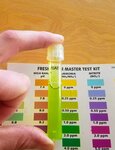Oh, I hadn't gotten from your post that you lost your cycle. What makes you think so?
---
As for plant advice, I'm always happy to talk about plants!
For an axolotl tank I would stick with easy hardy plants, yes. As you say, the water is cold and axolotls have a habit of attacking plants.
You'll definitely need light, though. Without extra light (other than just ambient room light) most plants would die, and they certainly wouldn't grow enough to be good for your water quality.
For water quality, you would rather have no plants than dying plants.
Popular beginner plants are anubias, java fern and java moss. All of them survive axolotls and cold temperatures well enough, but they won't grow very fast (they're actually warm water plants).
They're nice, but they won't do well enough in the cold to make a real difference in water quality. If you want plants for fun they're fine.
Very easy plants for cold water are Elodea and Hornwort.
Elodea is also called "waterweed" and it really grows like a weed. While they make roots they don't necessarily need them, so even if your axolotls uproot them they'll float happily on the surface. If they grow too tall you can snip them (or if an axolotl breaks up a stalk) and then you'll have two!
Hornwort is a bit prettier (and has less of a habit to make a big jungle of the tank), but both are real nitrate-sucking powerhouses. You'll have to trim them regularly.
Cold water is important, and enough light as well. Waterweed that gets too little light becomes very pale, to brown, to sludge, which makes your aquarium quite gross and has the opposite effect of the intended water quality improvement.
Elodea and Hornwort both grow very tall. If you have a lower aquarium you could try water milfoil. It's quite similar but tends to stay a little lower.
Vallisneria does quite well as well. It's not as much of a monster as waterweed or Hornwort, but it's absolutely indestructible so axolotl-safe. It's especially easy to propagate, so you can start out with just one plant and slowly fill up the entire tank.
In my experience, axolotls produce enough fertilisers (poop!) that you won't need any additional fertilisers. As long as you have enough light and cool water, all the plants above should grow pretty well.
Water flow or air bubbles always help but aren't necessary. I've never used CO2.
Something else you could consider is emersed plants: leaves out of the water, roots in the water.
You mentioned bamboo, which works well.
Pothos is also a very popular choice; I've used arrowhead plant and spider plant, which can all be found in every student dorm or elderly home in the world, I believe.
I was very happy with emersed basil as well because it's nice in salads and turning axolotl poop into salad herbs was not as gross as it sounds.
Emersed plants tend to grow even quicker than underwater plants, and axolotls like the roots well enough to hang out in. Really depends on the shape of your tank, though.
As always when people get me started on plants this has become a lot of words. Apologies.


